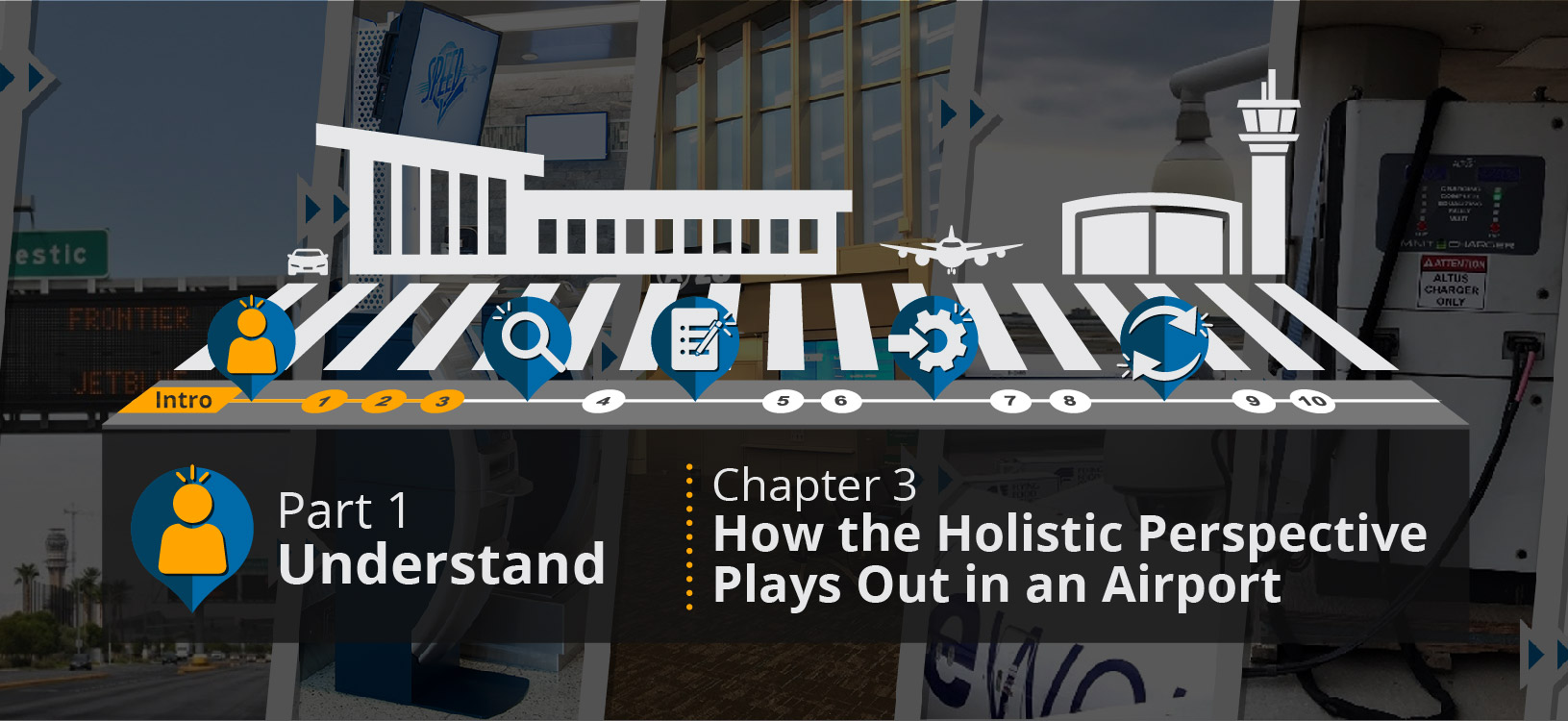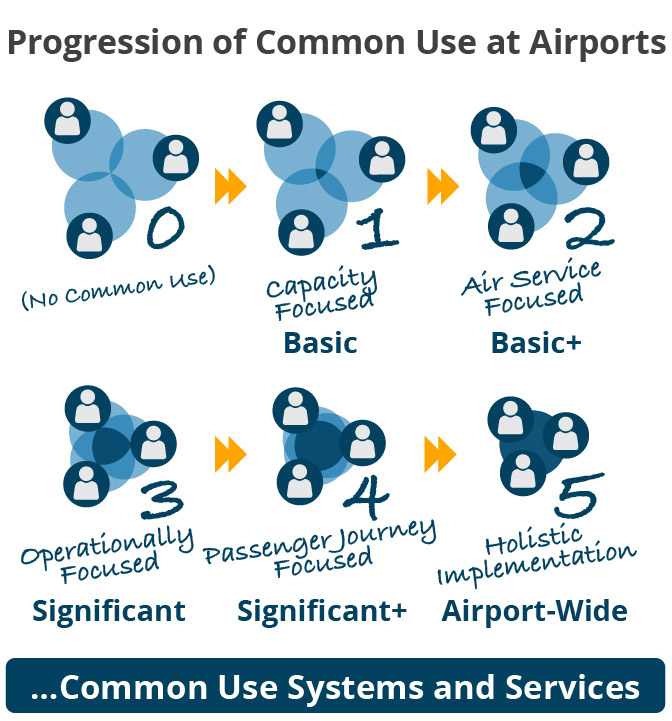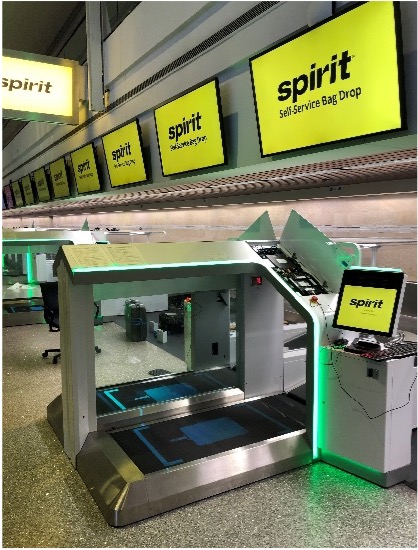
Progression and Need for Advancing at Different Levels
The scope and scale of the holistic common use program are influenced by the key factors described in the previous section. And since the needs of every airport will be unique, each operator should develop a personalized program within the overall framework defined in Parts 3 and 4. However, the progression of the core common use elements over time will largely look similar at most airports, with the scope and scale varying based on the value each element brings to each given airport. For illustration purposes, Figure 3.2.1 presents 5 levels that describe the typical progression of common use at airports.


Figure 3.2.1: Progression of Common Use at Airports
The holistic progression level of the airport's common use environment has a direct impact on the capabilities of the airport to influence the air service options and quality of service for its passengers. At a low level of holistic common use progression, the passenger experience is primarily determined by the airline that they choose to travel with. At a high level of holistic common use progression, the airport operator will be able to influence almost every aspect of the passenger's experience while in the airport.
The following provides descriptions of each progression level. It is worth noting that though this general progression does fit most airports, the underlying motivations and factors that drive the scope and scale of individual initiatives can be quite different.

Level 0: No Common Use
At Level 0, there is no common use implementation of any kind-at least beyond the general shared use of areas such as runways and taxiways on the airfield. All airlines lease space under an exclusive use agreement and receive electricity, water, and security services from the airport as appropriate for the spaces leased. The airlines provide their own millwork, network infrastructure, and technology systems. They display their own flight information, baggage information, gate information, and ramp information displays (FIDS, BIDS, GIDS, and RIDS, respectively) and branding according to the guidelines of the airport operator and provide janitorial services for their lease space. The airport has no strategic vision for implementing common use.

Level 1: Basic Common Use Systems and Services
At Level 1, some airlines are using basic common use systems and services. Airlines with a low number of weekly turns and/or international flights may lease common use check-in and/or gate spaces and share the resources with other airlines on a flight-to-flight basis. The common use deployment might be voluntary or only for international or low-cost carriers (LCC) or ultra-low-cost carriers (ULCC) that have asked the airport operator to provide such. The airport provides the millwork, network infrastructure, and technology systems for these specific check-in and gate spaces. The airport may have a limited FIDS to support these common use airlines. The airlines may be permitted to provide their branding according to the guidelines of the airport operator during their operational time window. The airport likely provides janitorial services for the common use spaces. The airport has no strategic vision for expanding common use to the hub airlines.

Level 2: Air Service Focused Basic Common Use Systems and Services
At Level 2, the common use operating model is the same as Level 1, however, the airport has a vision for improving the flexibility of the airport to accommodate more air service. It may also have the specific utilization of common use for code share, alliance, joint venture purposes, or it may be confined to specific geographic terminal areas based on leasing requirements/flexibility, capital development upgrades, or carrier requests. The airport's vision includes plans to expand common use implementation beyond the low-turn and international flights to allow for more check-in and gate resource availability to be shared, resulting in more capacity for air service growth. There may also be additional systems or services that have been added, such as a larger foray into dynamic signage or a campus-wide network, with these spilling into proprietary leased areas.

Level 3: Operationally Focused Significant Common Use Systems and Services
At Level 3, traditional common use elements are fully implemented, and many airlines are using common use systems and services in dedicated common use concourses. The airport provides the millwork, network infrastructure, and technology systems throughout these concourses. The airport will have a robust multi-user FIDS to support these common use airlines and possibly all airlines across the airport. The airport uses a resource management system and assigns check-in and gate resources to airlines as needed. The airport also provides video displays at the check-in and gate locations for dynamic signage that shows the relevant information and branding for the airline that is using that space; therefore, the airlines are not permitted to display their own branding. The airport provides janitorial services for the common use spaces. The airport has a vision for maximizing the flexibility of the airport to accommodate more air service. This will include plans to expand the common use implementation across the airport. The airport will likely keep airlines at their preferentially assigned locations for the most part but will be able to reposition some airlines more easily as needed and add new air service to locations that have capacity. Common use is likely addressed, to some extent, in the airline lease and use agreement at this level.

Level 4: Passenger Journey Focused Significant Common Use Systems and Services
At Level 4, the common use operating model is the same as Level 3; however, the airport has a vision to grow the common use program to provide greater benefit to the airport, passengers, airlines, and regulatory agencies. This includes expanding common use implementation airport-wide with additional implementations in areas such as on the airfield ramp and increasing the common use systems and services to maximize the airport's operational control over the passenger journey. It is at this level that the airport operator shifts their perspective of common use from passenger processing systems and services to a much more holistic view of all systems and services that the airport can provide to maximize their operational oversight. This operating philosophy does not seek such oversight to exert a position of power but rather from a position of overall improvement, including operational efficiency, fiduciary responsibility, and service quality on all levels.

Level 5: Holistic Implementation, Airport-Wide Common Use Systems and Services
At Level 5, the airport has already expanded common use implementation to cover everything from landside to airside and is focused on increasing the common use systems and services to maximize the airport's operational control over the passenger journey. It likely extends the holistic focus into other systems and services, perhaps including federal and/or other stakeholders.




